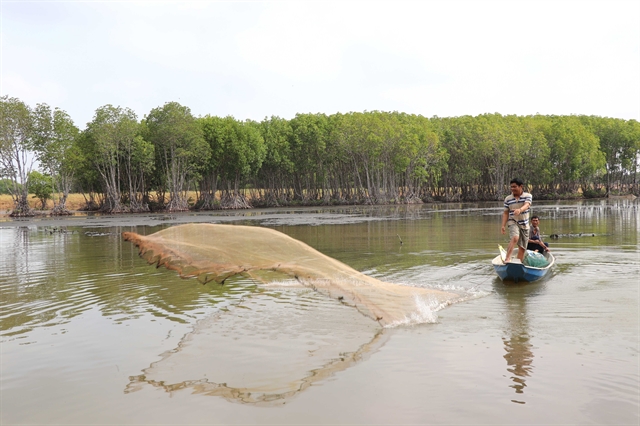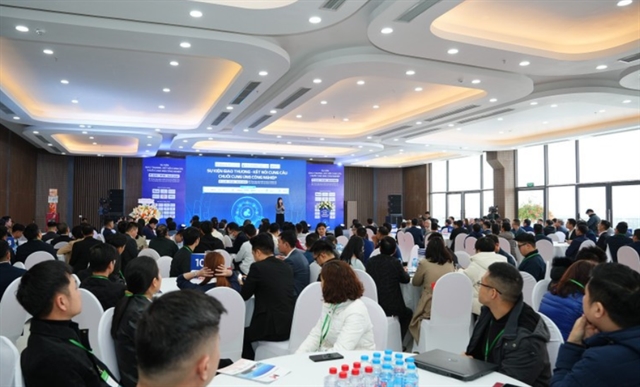 Society
Society
.jpg)
 |
| Huỳnh Công Lý’s mangrove forest where he breeds black-tiger shrimp and mud crab in Trà Vinh Province’s Duyên Hải District. – VNA/VNS Photo Thanh Hoà |
TRÀ VINH – More and more farmers in Trà Vinh Province’s coastal areas are growing mangrove forests and breeding aquatic species in them since the model is sustainable, improves their incomes and mitigates the impacts of climate change.
It has also helped recover the mangrove forests in the Cửu Long (Mekong) Delta province.
In Duyên Hải District, farmers in the coastal communes of Đông Hải, Long Vĩnh and Long Khánh and Long Thành Town are embracing the model with encouragement from local authorities.
The La Ghi Hamlet shrimp - forest farming co-operative group in Long Vĩnh Commune was established in 2019 and has nine households as members with 30ha of shrimp-forest farming.
Huỳnh Công Lý, its head, said in the past farmers bred black-tiger shrimp under the intensive farming method because of the high profits it brought. But the impacts of climate change, increasing disease outbreaks and the high risks involved with intensive farming caused many to suffer severe losses, he said.
So, when local authorities encouraged farmers to adopt the shrimp - forest farming model, many climbed on the bandwagon.
In 2016 Lý began to implement the model on his 4.5ha forest land, using 1.2ha to grow mangroves and 3.3ha to farm black-tiger shrimp and mud crab.
He now harvests one tonne of mud crabs and 700-800 kg of black-tiger shrimp a year and earns an average of VNĐ200 million (US$7,900).
The profit from the shrimp - forest farming model is not as high as from intensive farming, but he is satisfied since it offers a steady income and helps protect mangrove forests and the environment, according to the farmer.
Putting his money where his mouth is, he expanded the model to an additional 2.8ha in 2021.
Farming shrimp and other aquatic species in mangrove forests does not require much tending and their food cost is low since they mostly eat natural foods, according to farmers.
Shrimp bred in mangrove forests have few diseases and are clean, and traders and processing companies prefer clean shrimp.
According to Trương Văn Huy, chairman of the Duyên Hải District People’s Committee, shrimp and mud crab bred in mangrove forests is a sustainable aquacultural model that is adapted to climate change and prevents pollution.
The annual per capita income in the coastal communes last year was VNĐ68 million ($2,700), VNĐ8-10 million ($320-400) higher than in the district’s other communes.
The district has 2,065 households who breed black-tiger shrimp and mud crabs in 4,432ha of mangrove forests, 846ha more than in 2015.
The province has 9,620ha of forests compared to less than 5,000ha in 1996, according Trần Trường Giang, director of the province's Department of Agriculture and Rural Development.
The province has a forest cover of 4.1 per cent, and aims to increase it to 4.2 per cent next year.
The province has allocated more than 5,000ha of mangrove forests to individuals, households and organisations in recent years to protect and breed aquatic species like black-tiger shrimp, mud crab and blood cockle in them.
The protectors are paid VNĐ500,000 ($20) per hectare annually for up to 15ha in case of individuals and 30ha in case of households.
The province will continue allocating more forest for private protection and exploitation, according to the department.
Last year it planted 50ha of new forests, mostly mangrove.
It plans to grow 150ha and tighten management and protection this year. – VNS
.jpg)



